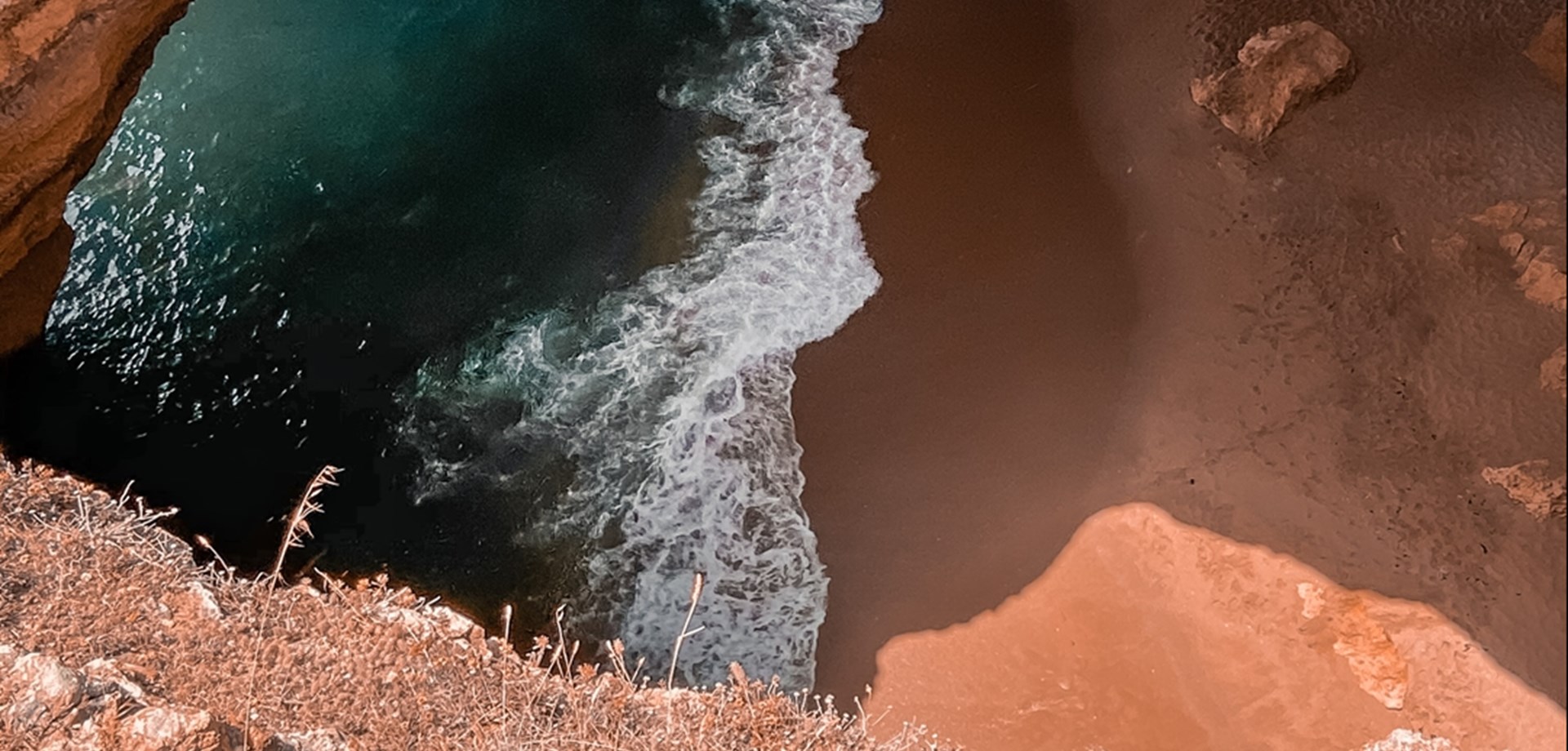Welcome to the Algarve
28 July 2022

Welcome to the Algarve
We're sure you've heard of him. Maybe a friend told you about one of its magnificent beaches. Perhaps you've seen a story dedicated to your Mediterranean-like gastronomy. Or he has stumbled upon a text like this, which highlights the history, culture and friendliness of those who are accustomed to welcome those who visit him.
But there is an Algarve that you have not yet discovered: the Algarve of the people who live here.
Only they can show you the hidden villages, the most untouched trails, the best restaurants to eat xarém (corn porridge), the deserted beaches, the places where flamingos take to the wings or the perfect course for their first round of golf.
Listen to our greatest secrets. And then whisper them, over and over again, in the ears of your family and friends. Because life is so much better when you share it.
Municipalities
United and diverse; This is the Algarve. A tourist destination composed of 16 municipalities, each with its own identity, enchanting landscapes and special stories to share. Learn more about the region's municipalities, explore what they have to offer, choose the places you definitely want to visit and work your vacation iti
History
A little history
Throughout the region, you will find the chance to discover some of the charms and secrets of Portugal's history, which time has not yet been able to erase.
Spending your holiday in the Algarve also offers an opportunity to travel back in time, finding countless testimonies for the different peoples and cultures that have come together throughout the history of this region.
From traces of Roman presence to evidence of the long legacy of Muslim times, from christian reconquest to the epic period of Portuguese discoveries, you'll find all sorts of reasons to rediscover the signs of a rather distinct historical past.
The evidence of the human settlement of the Algarve dates back to the immemorial time. Examples of this presence are found in the Neolithic remains of many thousands of years ago and the most recent, but no less interesting, Roman archaeological sites, now open to visitors.
Any trip to the region's past and its valuable history should also include a visit to the various archaeological museums, displaying a vast heritage that is waiting to be discovered. As home to a number of ancient civilizations, the Algarve was also visited by many other peoples, inevitably brought to the region by the immense sea that bathes its shores.
More than five centuries of Moorish influences have left their indelible mark on the region, beginning with its real name: Al-Gharb, which means West. The long Moorish occupation of the territory, which lasted from the 8th to the 13th century, must still be noted in the names of the cities and towns, in the agriculture of the region, in the architecture of the monuments, in the income patterns of the balconies, terraces and chimneys, or in the bleached houses still to be seen in many villages of the Algarve.
At that time, Silves was the central focus of the region because of its strategic geographical location.
In the mid-13th century, the Algarve was the last part of Portugal to be regained from Muslim rule. After a long period of advances and setbacks, the Christian reconquest enjoyed the valuable collaboration of the Knights of the Order of St. James, led by Don Paio Peres Correia. The result was that, during the reign of Dom Afonso III, the Arab presence in the Algarve was closed and the region was united to the kingdom of Portugal.
In addition to Silves, the cities of Tavira and Faro, the current capital of the Algarve, were definitely conquered from the Moors. This marked the foundation of the Kingdom of Portugal and the Algarves.
Later, at the beginning of the 15th century, the beginning of portuguese maritime expansion brought new life to the Algarve and its people. Since then, Lagos and Sagres have remained forever linked to Prince Henry, the Navigator and the Portuguese Discoveries. Even today, at the headland known as Ponta de Sagres, a giant stone finger can be seen pointing to the Atlantic Ocean in a clear allusion to the courage of the Algarve's navigators, such as Gil Eanes, who set sail across the seas in search of new worlds to give to the world.
Many brands of this remote past, which is still very present in the soul of the inhabitants of the Algarve, are found scattered throughout the region.
To visit Aljezur, Lagos, Silves, Faro, Tavira, Castro Marim and Alcoutim means discovering the grandeur of Portuguese history, its people and its traditions, in every museum, church, fort and castle of the region.
Demographics and Geography
The Algarve is divided into three large strips, each of great scenic beauty:
– The coast , where most of the region's economic activity is concentrated. you'll find steep cliffs falling sharply into the sea, extensive stretches of sand, lagoons with lots of entrances, swamps, dunes and more. The rocks are predominantly sedimentary, such as sandstone and conglomerates. Morphologically, the coast has a low altitude and consists mainly of flat terrain, such as pastures and plains;
– Barrocal is the transition zone between the coast and the arid lands, and consists of limestone rocks and cispeças. Also known as the serra-edge ("edge of the rising lands") it is traditionally the main supplier of agricultural products in the Algarve, including the renowned medronho cognac, honey and cork;
– The land (mountains ) occupy 50% of the territory. They consist of rocks cysts and some granite. The main plateau tracks are the Serra do Espinhaço de Cão, the Serra de Monchique, where the highest point of the Algarve is located, with 902 meters, and the Serra do Caldeirão, also known as Mú.
The geographical location of the Algarve confers special bioclimatic conditions in the region. The sun shines for more than 3,000 hours a year and the average annual rainfall is low.
The most important sector of activity is the tertiary sector (trade and services) due to the main economic activity - tourism.
Climate
The Algarve has one of the best climates in Europe all year round. With little rain, usually occurring between the months of November and March, and plenty of sunshine, the Algarve offers excellent weather conditions for tourism throughout the year.
Temperatures are high in summer, which is why the Algarve is a "sun and sea" destination and an authentic paradise for bathers. The beaches of the region, which stretch for many kilometers along the coast, consist of fine golden sand, and the sea is calm, with temperatures around 22ºC in summer.
Due to its terrain and geographical location, the Algarve is influenced by several climates: from the European continent to north Africa, and from the Atlantic Ocean to the Mediterranean Sea. Maximum temperatures range from 15ºC to 31ºC throughout the year. In winter, temperatures do not fall below freezing and sunny days attract many tourists from the coldest countries of northern Europe at this time of year.
Average temperatures
Air temperature in summer: 24ºC to 29ºC
Air temperature in winter: 15ºC to 18ºC
Sea temperature in summer: 21ºC to 24ºC
Sea temperature in winter: 15ºC to 19ºC
How to get to the Algarve
Due to its peripheral location, the Algarve enjoys good transport connections, both internally with other Portuguese cities and externally with the rest of the world. Several national airlines have regular flights to the Algarve, making Faro a busy international airport.
The Algarve also benefits from a good road network, consisting of motorways, trunk roads and a range of secondary roads, making travel comfortable and efficient, whether traveling by bus or driving in a rented car.
Information about electronic toll here.
Rail Portuguese transport is another alternative for visitors to the region.
International Access
Faro Airport
Tel.: 289 800 800 (General)
Tel: 289 800 801 (Flight information until midnight)
Tel: 289 800 617 (Flight information after midnight)
www.ana-aeroportos.pt
International Access by Road
N431 (Huelva, Spain) / A22 - (Via do Infante, Portugal)
Port of Portimão
Phone: 282 400 680
National Access
Roads
IC1, N2, N120, N122
Information about electronic toll
Trains
"Alfa Pendular": fully equipped, fast and comfortable trains.
Intercity trains: connections to several cities in Portugal, such as Lisbon-Algarve
Interregional trains.
Bus
Express service: from various locations
Access in the Algarve
Main road links
A22 - (Via do Infante), N125
Trains
Services between Lagos and Vila Real de Santo Antônio
Accessible Algarve
The Algarve is a tourist destination that is becoming increasingly established, as a place where areas of natural beauty, beaches and cities are accessible for all to enjoy. Here you will find information that will help you plan your vacation in the region.
Accommodation
The Algarve offers a wide and varied range of accommodation, including rooms adapted for guests with special needs. When searching for accommodation on this portal, choose the option "Handicapped Facilities". Always contact the accommodation directly for more accurate information on the type of facilities and equipment available.
Transport
Airport – Faro Airport, as well as other airports in Portugal, offers travelers the "MyWay" service, which offers personalized assistance for passengers with reduced mobility. This service includes mechanical means to facilitate mobility, as well as qualified professionals who will ensure that passengers are provided with all comfort and convenience while at the airport. Click here for more information.
Taxis - Adapted taxis are available for travellers with reduced mobility. They are equipped with boarding platforms, adapted seat belts, wheelchair safety devices and doors with wider opening angles. These taxis can be requested by contacting the dispatchers. Click here for more information.
(+351) 707 277 277
(+351) 911 910 808
(+351) 965 020 808
(+351) 934 430 808
ANTRAL - regional subsidiary
(+351) 289 827 203
Train – Trains in Portugal are operated by a company called CP-Comboios de Portugal. To learn more about the accessibility of your equipment and services, contact the Integrated Mobility Service (SIM) by phone (+351) 707 210 746 (707 210 SIM). More information is available online.
Bus and bus – Some urban public transport services in the Algarve offer adapted vehicles. Click here for more information.
Transfer Services – Some transport operators and travel agencies providing private transport services have vehicles adapted for passengers with reduced mobility. Click here for more information.
Driving – If you have a valid driver's license in Portugal, you can drive vehicles as long as you comply with the restrictions or adaptations applicable to the circumstances.
Standard EU parking badges issued by any EU Member State are valid in Portugal and you can park in spaces flagged as being for disabled drivers.
Accessible beaches
The Algarve is a fabulous beach destination and offers 48 accessible beaches, all properly identified by means of a white flag with the identification logo. These beaches are easy to reach on foot and have organized parking lots, including parking spaces used by people with disabilities. Mobility in the sands and even water is provided by equipment such as ramps, mechanical means and walkways, and there are accessible toilets and first aid stations. Discover our affordable beaches . here.
Accessible itineraries
Throughout the Algarve, cities and cities are gradually improving their public and private spaces in order to make them more accessible.
Discover the area's affordable itineraries and public spaces:
Accessible itinerary in Faro
Route accessible in Portimão
Vilamoura
Accessible itinerary in Lagos
Itinerary accessible in Tavira
Useful site:
https://www.tur4all.pt/


